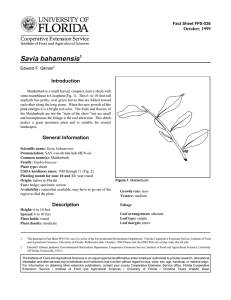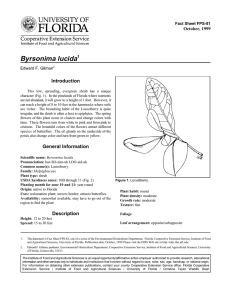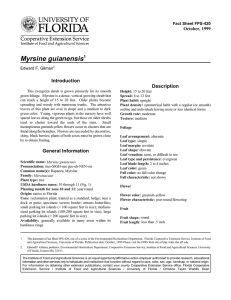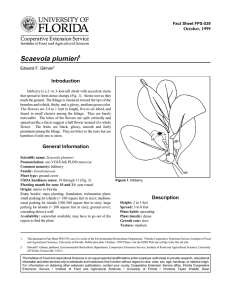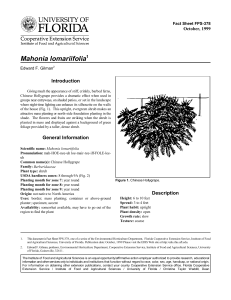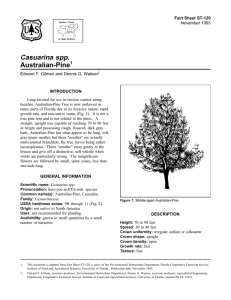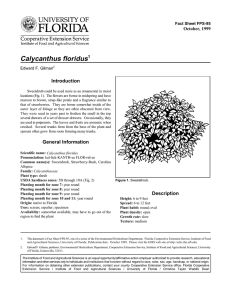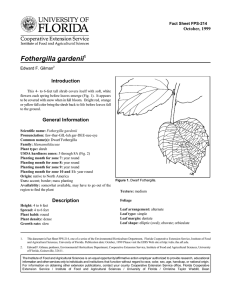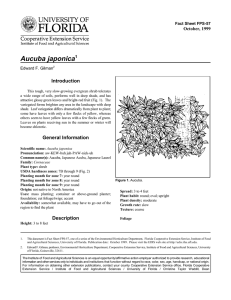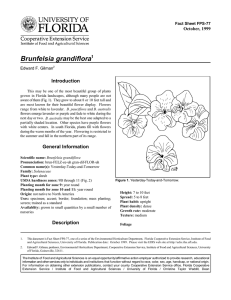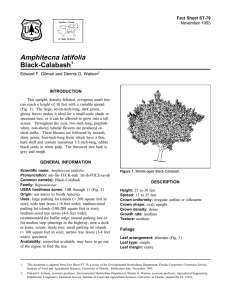Breynia disticha Introduction October, 1999 Fact Sheet FPS-73
advertisement
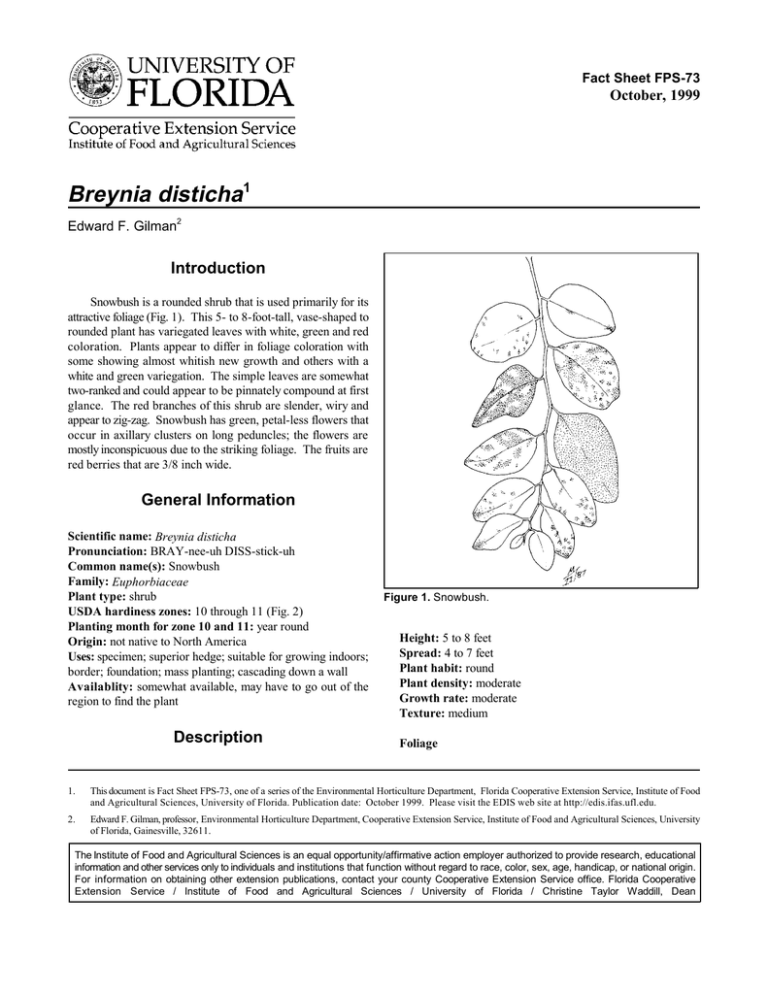
Fact Sheet FPS-73 October, 1999 Breynia disticha1 Edward F. Gilman2 Introduction Snowbush is a rounded shrub that is used primarily for its attractive foliage (Fig. 1). This 5- to 8-foot-tall, vase-shaped to rounded plant has variegated leaves with white, green and red coloration. Plants appear to differ in foliage coloration with some showing almost whitish new growth and others with a white and green variegation. The simple leaves are somewhat two-ranked and could appear to be pinnately compound at first glance. The red branches of this shrub are slender, wiry and appear to zig-zag. Snowbush has green, petal-less flowers that occur in axillary clusters on long peduncles; the flowers are mostly inconspicuous due to the striking foliage. The fruits are red berries that are 3/8 inch wide. General Information Scientific name: Breynia disticha Pronunciation: BRAY-nee-uh DISS-stick-uh Common name(s): Snowbush Family: Euphorbiaceae Plant type: shrub USDA hardiness zones: 10 through 11 (Fig. 2) Planting month for zone 10 and 11: year round Origin: not native to North America Uses: specimen; superior hedge; suitable for growing indoors; border; foundation; mass planting; cascading down a wall Availablity: somewhat available, may have to go out of the region to find the plant Description Figure 1. Snowbush. Height: 5 to 8 feet Spread: 4 to 7 feet Plant habit: round Plant density: moderate Growth rate: moderate Texture: medium Foliage 1. This document is Fact Sheet FPS-73, one of a series of the Environmental Horticulture Department, Florida Cooperative Extension Service, Institute of Food and Agricultural Sciences, University of Florida. Publication date: October 1999. Please visit the EDIS web site at http://edis.ifas.ufl.edu. 2. Edward F. Gilman, professor, Environmental Horticulture Department, Cooperative Extension Service, Institute of Food and Agricultural Sciences, University of Florida, Gainesville, 32611. The Institute of Food and Agricultural Sciences is an equal opportunity/affirmative action employer authorized to provide research, educational information and other services only to individuals and institutions that function without regard to race, color, sex, age, handicap, or national origin. For information on obtaining other extension publications, contact your county Cooperative Extension Service office. Florida Cooperative Extension Service / Institute of Food and Agricultural Sciences / University of Florida / Christine Taylor Waddill, Dean Breynia disticha -- Snowbush Page 2 Figure 2. Shaded area represents potential planting range. Trunk and Branches Leaf arrangement: alternate Leaf type: simple Leaf margin: entire Leaf shape: ovate; obovate Leaf venation: pinnate Leaf type and persistence: evergreen Leaf blade length: less than 2 inches Leaf color: purple or red; variegated; pink Fall color: no fall color change Fall characteristic: not showy Flower Flower color: white Flower characteristic: summer flowering; fall flowering Fruit Fruit shape: round Fruit length: less than .5 inch Fruit cover: fleshy Fruit color: unknown Fruit characteristic: inconspicuous and not showy Trunk/bark/branches: typically multi-trunked or clumping stems; not particularly showy Current year stem/twig color: reddish Current year stem/twig thickness: thin Culture Light requirement: plant grows in part shade/part sun Soil tolerances: acidic; slightly alkaline; sand; loam; Drought tolerance: moderate Soil salt tolerances: poor Plant spacing: 36 to 60 inches Other Roots: sprouts from roots or lower trunk Winter interest: no special winter interest Outstanding plant: plant has outstanding ornamental features and could be planted more Invasive potential: not known to be invasive October 1999 Breynia disticha -- Snowbush Page 3 Pest resistance: no serious pests are normally seen on the plant Use and Management This shrub may be used as a specimen and accent, and it also forms a nice hedge. Given enough room to expand its canopy, a single, unpruned specimen forms an attractive vase shape. It can also make for an accent in a shrub border. Branches are flexible enough to drape over a wall. Snowbush will grow well on a wide range of soils but requires a full sun position in the landscape to maintain dense growth. This plant is tolerant of light, sandy soils but will not tolerate salt. Vigorous growth with regular, light fertilizer applications allows the new foliage to show it true charm. Snowbush may be propagated by cuttings and sucker divisions. Pests and Diseases Although caterpillars and mites may be troublesome pests for Snowbush, this plant is not susceptible to any major diseases. October 1999
